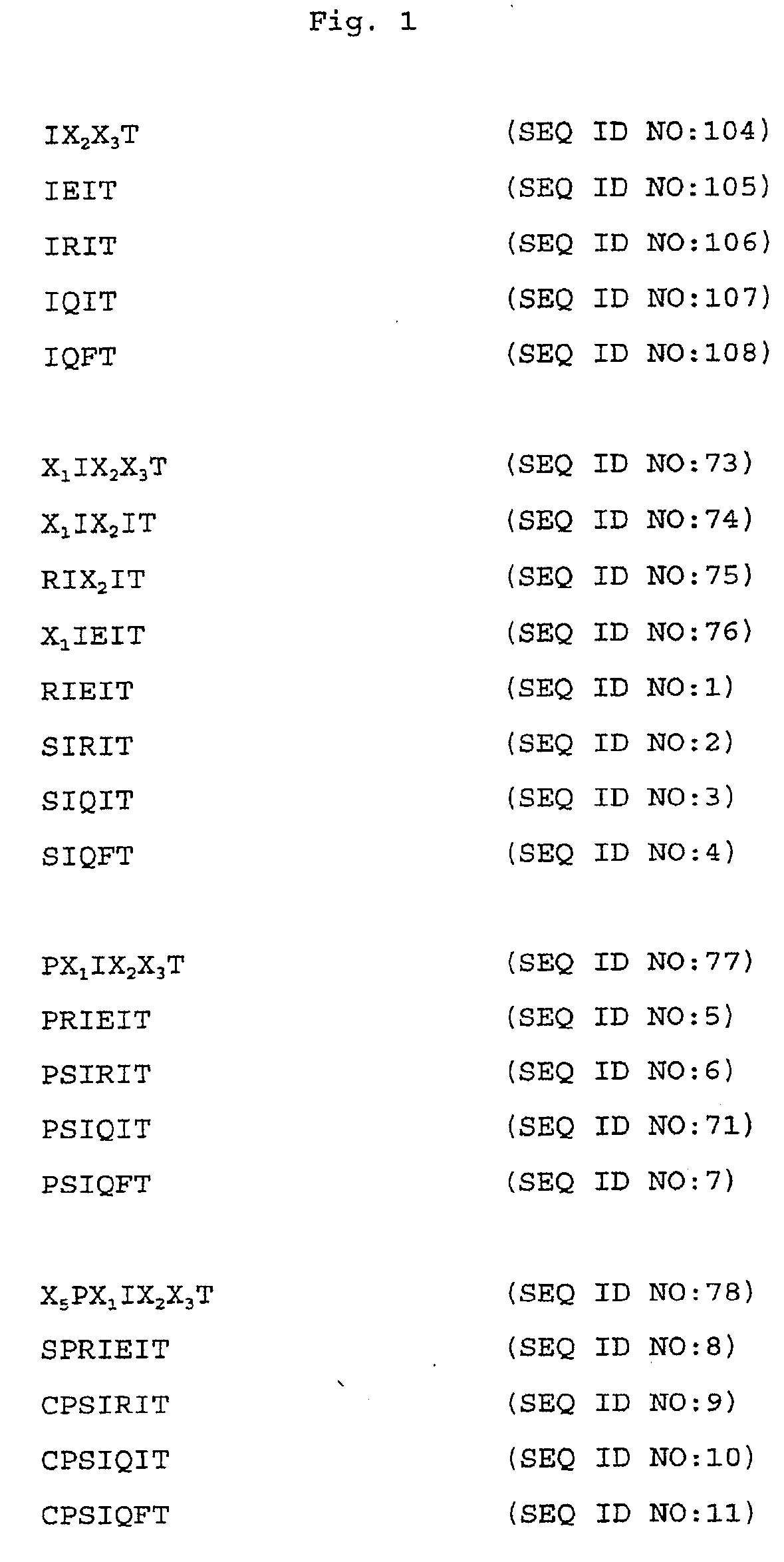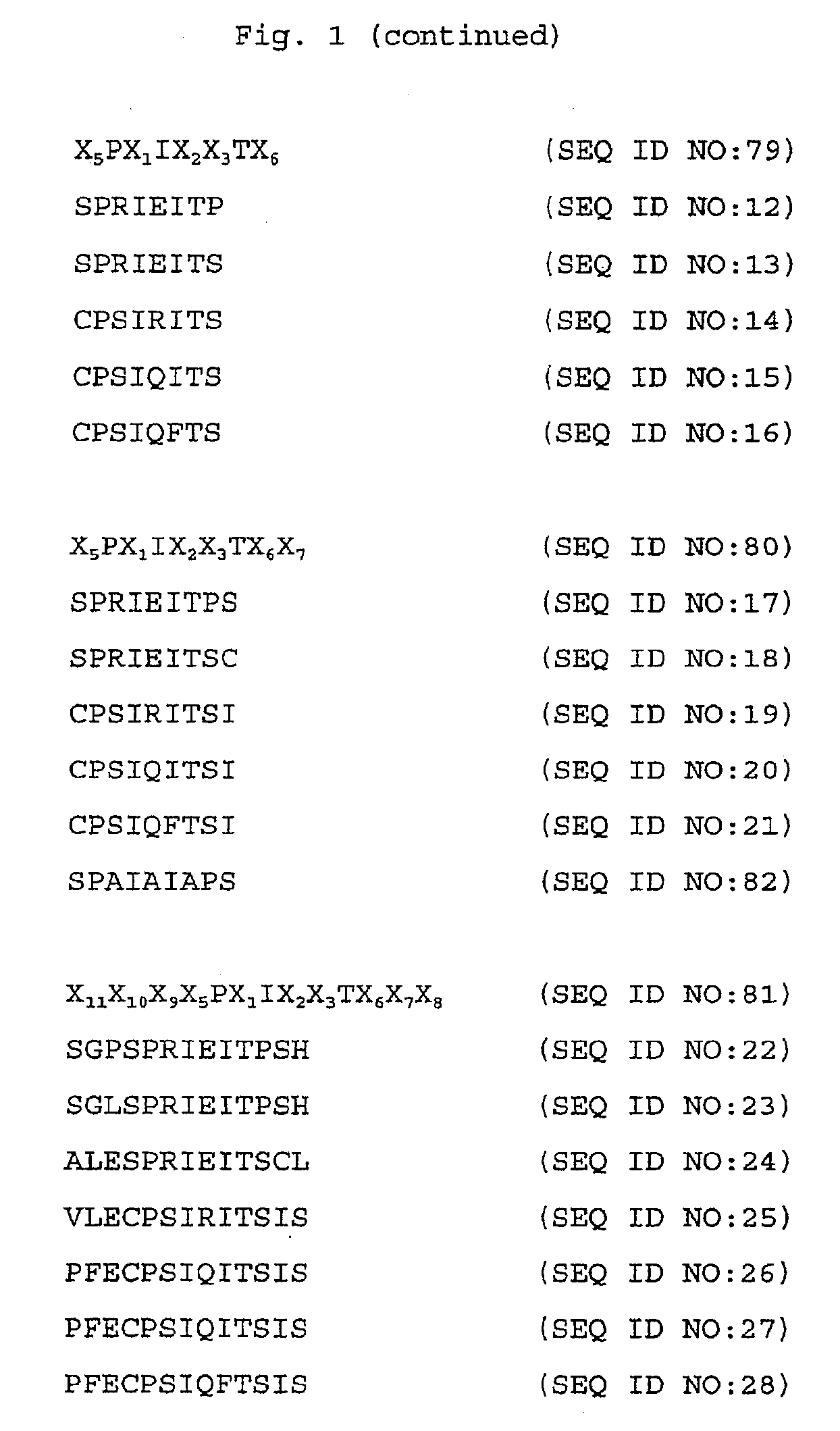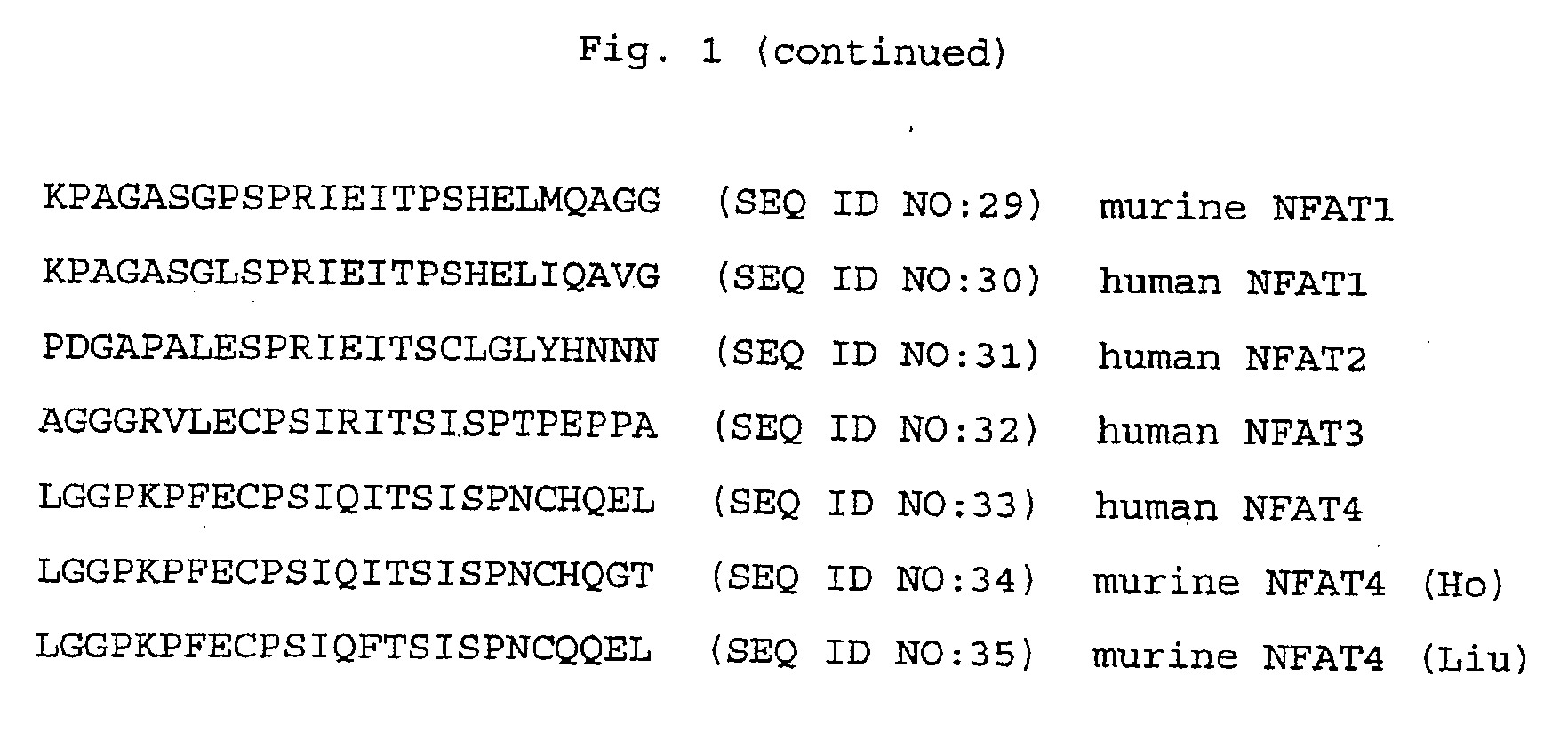Specific inhibitors of nfat activation by calcineurin and their use in treating immune-related diseases
a technology of calcineurin and nfat, which is applied in the field of immunosuppressive agents, can solve the problems of inability to detect nfat activation, inability to detect nfat activity, and inability to detect nfat activity, and achieve the effect of reducing toxic effects
- Summary
- Abstract
- Description
- Claims
- Application Information
AI Technical Summary
Benefits of technology
Problems solved by technology
Method used
Image
Examples
example 1
The SPRIEITPS Sequence of NFAT1 is Involved in Nuclear Import of NFAT1
[0176]This example illustrates that mutations in the SPRIEITPS (SEQ ID NO:17) sequence in the conserved motif-2 (CM2) region (amino acid residues 110-118) of the NFAT1 conserved regulatory domain (amino acid residues 100-397) inhibit translocation of the mutant NFAT1 protein from the cytoplasm to the nucleus.
[0177]A triple CM2 mutant was generated which disrupts the sequence 110SPRIEITPS118 (SEQ ID NO:17) of NFAT1 by replacing each of the three amino acid residues Arg112 (R112), Glu14 (E114), and Thr116 (T116), with an alanine residue. These mutations were generated following the procedures described in Kunkel et al., Methods Enzymol. 154:367-382 (1987). The mutant proteins were expressed with an HA epitope tag in C1.7W2 murine T cells and in HeLa cells, and analyzed for nuclear translocation in response to ionomycin stimulation. The mutant proteins behaved identically in both cell types. Translocation of wild typ...
example 2
The SPRIEITPS Sequence of NFAT1 is Required for Effective Dephosphorylation by Calcineurin
[0180]This example illustrates that mutations in the SPRIEITPS (SEQ ID NO:17) sequence of NFAT1 inhibit dephosphorylation of the mutant NFAT1 protein by calcineurin.
[0181]The inability of the CM2 mutant, containing the three mutations described in Example 1, to translocate to the nucleus correlated with its very limited dephosphorylation in stimulated cells. When transiently expressed either in HeLa cells or in C1.7W2 murine T cells, wild type NFAT1(1-460)-GFP fusion protein was dephosphorylated in response to ionomycin stimulation (3 μM, 10 min) as assessed by its shift in migration on SDS-polyacrylamide gel electrophoresis (SDS-PAGE). The more complete shift observed in C1.7W2 T cells under these conditions reflects the higher level of calcineurin activity in this cell line. In contrast, the triple CM2 mutant NFAT1 (1-460)-GFP showed no change in migration after ionomycin stimulation of HeLa ...
example 3
Peptides Spanning the SPRIRITPS Sequence of NFAT1 Interfere with Recognition and Dephosphorylation of NFAT1 by Calcineurin
[0185]This example illustrates that peptides spanning the SPRIEITPS (SEQ ID NO:17) sequence of NFAT1 interfere with recognition and dephosphorylation of NFAT1 by calcineurin.
[0186]The results from Examples 1 and 2 indicated that the CM2 mutations in the SPRIEITPS (SEQ ID NO:17) sequence impaired the ability of calcineurin to recognize NFAT1 as a substrate and to dephosphorylate it, either in vivo or in cell extracts. One possibility was that the SPRIEITPS (SEQ ID NO:17) sequence represented a region of NFAT-calcineurin contact and that mutation of this sequence impaired the targeting of calcineurin to NFAT.
[0187]To test whether the SPRIEITPS (SEQ ID NO:17) motif was directly involved in the interaction of NFAT with calcineurin, peptides spanning the CM2 motif of wild type and mutant NFAT1 were tested in an NFAT-calcineurin binding assay for their capacity to bloc...
PUM
| Property | Measurement | Unit |
|---|---|---|
| pH | aaaaa | aaaaa |
| pH | aaaaa | aaaaa |
| pH | aaaaa | aaaaa |
Abstract
Description
Claims
Application Information
 Login to View More
Login to View More - R&D
- Intellectual Property
- Life Sciences
- Materials
- Tech Scout
- Unparalleled Data Quality
- Higher Quality Content
- 60% Fewer Hallucinations
Browse by: Latest US Patents, China's latest patents, Technical Efficacy Thesaurus, Application Domain, Technology Topic, Popular Technical Reports.
© 2025 PatSnap. All rights reserved.Legal|Privacy policy|Modern Slavery Act Transparency Statement|Sitemap|About US| Contact US: help@patsnap.com



